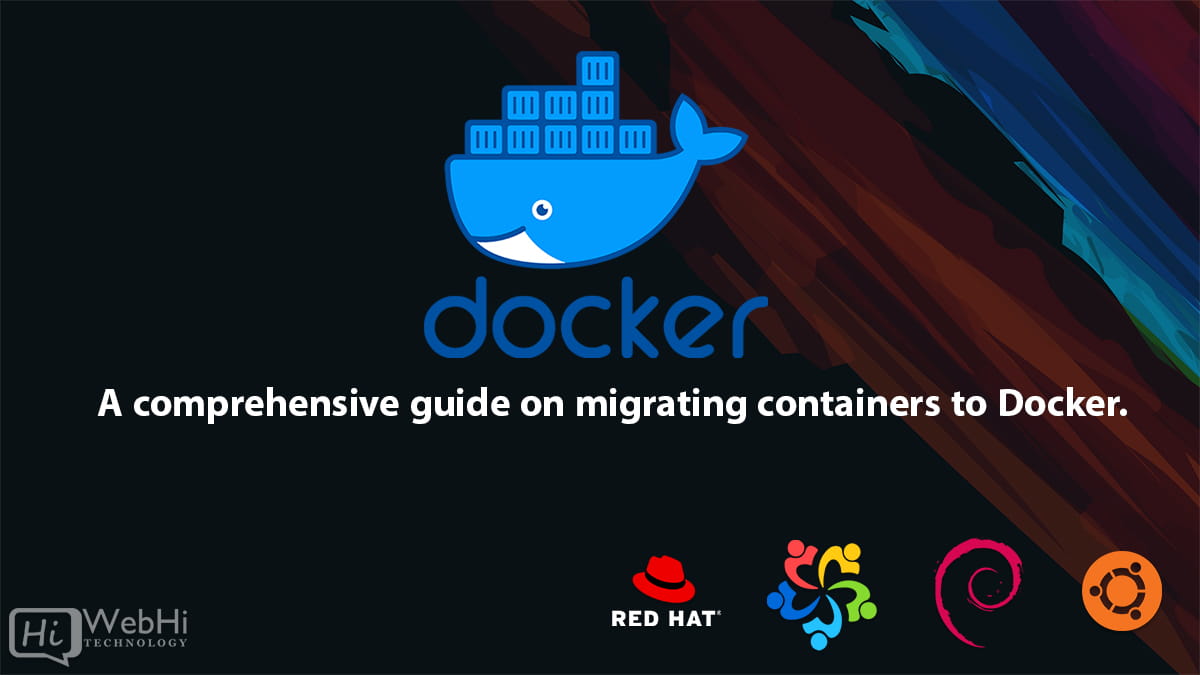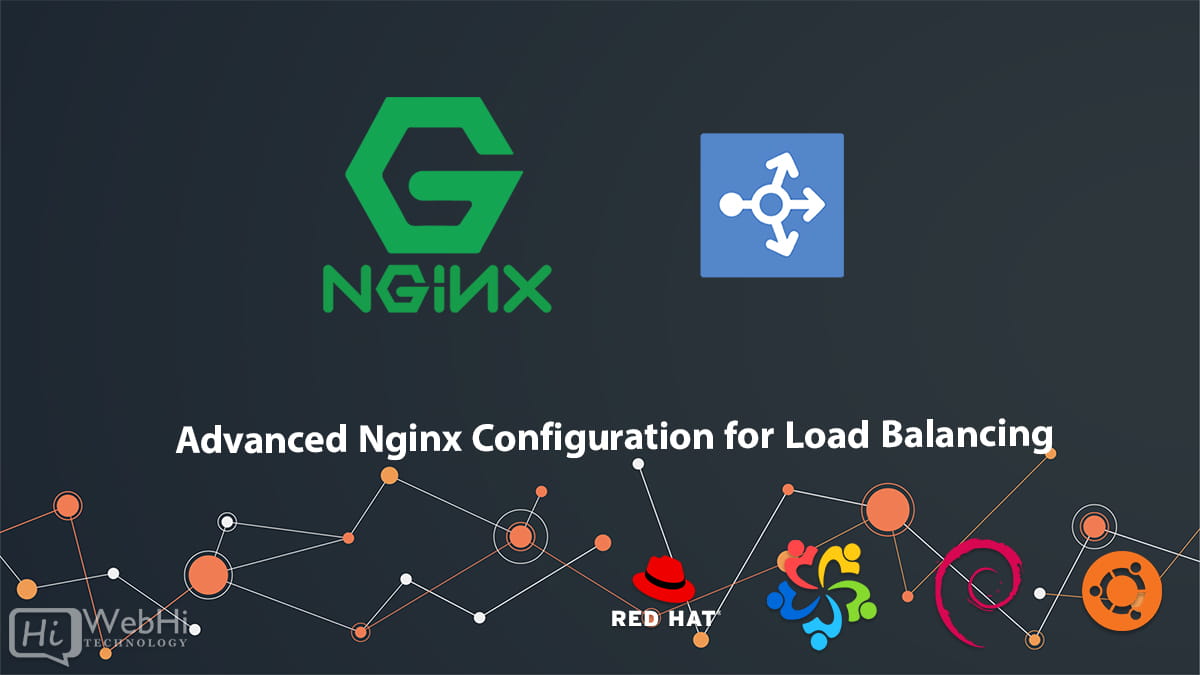Comprehensive Guide on Migrating Containers to Docker

Docker has revolutionized the way we develop, deploy, and manage applications by introducing the concept of containerization. Containers provide a consistent and isolated environment for applications, allowing them to run reliably across different computing environments. However, there may be times when you need to migrate containers from one host to another, whether it’s for load balancing, scaling, or disaster recovery purposes.
In this article, we’ll explore various methods for migrating containers on Docker, including using Docker’s built-in commands, third-party tools, and advanced techniques. We’ll cover scenarios such as migrating a single container, migrating multiple containers, and migrating containers with persistent data. Let’s dive in! This Comprehensive Guide on Migrating Containers to Docker will provide you with all the information you need to seamlessly move your applications.
1. Prerequisites
Before we begin, make sure you have the following prerequisites in place:
- Docker installed on both the source and destination hosts.
- Docker Compose installed if you plan to use it.
- Network connectivity between the source and destination hosts, or a shared storage location.
- Sufficient disk space on both hosts to accommodate the container images and data.
2. Migrating a Single Container
The simplest scenario is migrating a single container from one host to another. Docker provides built-in commands to handle this task.
2.1. Exporting a Container
On the source host, use the docker export command to create an archive of the container’s filesystem:
$ docker export <container_id_or_name> > container.tarReplace <container_id_or_name> with the actual ID or name of the container you want to migrate.
2.2. Transferring the Container Archive
Next, transfer the container.tar archive to the destination host. You can use various methods for this, such as:
- SCP (Secure Copy)
- FTP (File Transfer Protocol)
- NFS (Network File System)
- Cloud storage (e.g., Amazon S3, Azure Blob Storage)
- Shared network drive
For example, using SCP:
$ scp container.tar user@remote_host:/path/to/destination2.3. Importing the Container
On the destination host, use the docker import command to create a new image from the container archive:
$ docker import container.tar new_image_nameReplace new_image_name with the desired name for the new image.
2.4. Running the Imported Container
Finally, run the imported container using the docker run command:
$ docker run -d --name new_container_name new_image_nameReplace new_container_name with the desired name for the new container.
3. Migrating Multiple Containers
If you need to migrate multiple containers, you can follow a similar process, but with a few additional steps.
3.1. Exporting Multiple Containers
On the source host, export each container as an individual archive:
$ docker export <container1_id_or_name> > container1.tar
$ docker export <container2_id_or_name> > container2.tar
# ... and so on3.2. Creating a Single Archive
To transfer the containers more efficiently, create a single archive containing all the individual container archives:
$ tar -czf containers.tar.gz container1.tar container2.tar ...3.3. Transferring the Archive
Transfer the containers.tar.gz archive to the destination host using your preferred method (e.g., SCP, FTP, NFS, cloud storage).
3.4. Extracting the Archives
On the destination host, extract the individual container archives from the containers.tar.gz archive:
$ tar -xzf containers.tar.gz3.5. Importing and Running Containers
For each extracted container archive, follow the same steps as in the single container migration:
$ docker import container1.tar new_image1_name
$ docker run -d --name new_container1_name new_image1_name
$ docker import container2.tar new_image2_name
$ docker run -d --name new_container2_name new_image2_name
# ... and so on4. Migrating Containers with Persistent Data
If your containers use persistent data volumes or bind mounts, the migration process becomes slightly more complex. You’ll need to migrate both the container and its associated data.
4.1. Exporting the Container and Data
On the source host, export the container and its data volumes or bind mounts. For data volumes, use the docker export command:
$ docker export --output="container.tar" <container_id_or_name>
$ docker run --rm --volumes-from <container_id_or_name> -v $(pwd):/backup ubuntu tar czf /backup/data.tar.gz /path/to/data/volumeFor bind mounts, create a separate archive for the data:
$ tar -czf data.tar.gz /path/to/bind/mount/data4.2. Transferring the Archives
Transfer both the container.tar and data.tar.gz archives to the destination host.
4.3. Importing the Container and Data
On the destination host, import the container and extract the data:
$ docker import container.tar new_image_name
$ tar -xzf data.tar.gz4.4. Creating a New Container with Persistent Data
When creating the new container, mount the persistent data volumes or bind mounts:
For data volumes:
$ docker run -d --name new_container_name
-v /path/to/new/data/volume:/path/to/data/volume
new_image_nameFor bind mounts:
$ docker run -d --name new_container_name
-v /path/to/bind/mount/data:/path/to/data/volume
new_image_nameReplace /path/to/new/data/volume and /path/to/bind/mount/data with the appropriate paths on the destination host.
5. Advanced Migration Techniques
While the methods described above are suitable for most scenarios, there are more advanced techniques you can consider for migrating containers. This section provides additional methods to consider when Migrating Containers to Docker.
5.1. Using Docker Compose
If you’re using Docker Compose to manage multi-container applications, you can leverage the built-in migration capabilities of Compose. Simply transfer your docker-compose.yml file and any associated data volumes to the destination host, and then run docker-compose up to recreate the containers and their dependencies.
5.2. Utilizing Docker Registries
Instead of transferring container archives directly, you can push your containers to a Docker registry (e.g., Docker Hub, Azure Container Registry, Amazon Elastic Container Registry) and then pull them on the destination host. This approach is particularly useful when migrating containers across different networks or cloud environments.
5.3. Leveraging Container Orchestration Tools
If you’re using container orchestration tools like Kubernetes, Swarm, or Nomad, you can take advantage of their built-in migration and failover capabilities. These tools provide mechanisms for seamlessly moving containers across different hosts or clusters, often with minimal downtime.
6. Best Practices and Considerations
When migrating containers, it’s essential to keep the following best practices and considerations in mind:
- Plan your migration: Carefully plan the migration process, including identifying dependencies, data volumes, and network configurations.
- Test your migration: Always test your migration strategy in a non-production environment before deploying it to production systems.
- Backup your data: Before migrating containers with persistent data, create backups of your data volumes to prevent data loss.
- Monitor your containers: After migrating containers, monitor their performance and resource utilization to ensure they are functioning correctly.
- Secure your containers: Implement security best practices to protect your containers from unauthorized access and vulnerabilities.
- Consider downtime: Determine the acceptable downtime for your application and choose a migration method that minimizes disruption.
7. Conclusion
Migrating containers on Docker is a crucial skill for DevOps professionals, system administrators, and developers. By following the methods outlined in this article, you can seamlessly move containers between hosts, ensuring consistent application deployment and enabling efficient resource management. This Comprehensive Guide on Migrating Containers to Docker should give you a solid foundation.
Whether you’re migrating a single container, multiple containers, or containers with persistent data, Docker provides powerful tools and techniques to streamline the migration process. Additionally, leveraging advanced techniques like Docker Compose, registries, and container orchestration tools can further enhance your migration capabilities.
Remember, migrating containers is not a one-size-fits-all process, and the specific approach you choose will depend on your application’s requirements, infrastructure, and operational constraints. Familiarize yourself with the various migration methods, follow best practices, and always test your migration strategies in non-production environments before deploying them to production systems. This Comprehensive Guide on Migrating Containers to Docker has provided a variety of strategies.
8. Alternative Migration Strategies
While the docker export and docker import method is a valid approach, it’s not always the most efficient, especially for larger containers or when dealing with complex configurations. Here are two alternative strategies for migrating containers to Docker:
8.1. Using docker commit and Docker Registries
This approach leverages Docker’s image creation capabilities combined with a registry to facilitate the transfer. It’s generally faster and more reliable than docker export/import, especially for larger containers.
Steps:
-
Commit the Container: On the source host, use the
docker commitcommand to create a new image from the running container.docker commit <container_id_or_name> <new_image_name>:<tag>Replace
<container_id_or_name>with the container ID or name,<new_image_name>with the desired image name, and<tag>with a tag (e.g.,latest,v1.0). -
Tag the Image (Optional but Recommended): Ensure the image is correctly tagged for pushing to the registry.
docker tag <new_image_name>:<tag> <registry_username>/<new_image_name>:<tag>Replace
<registry_username>with your Docker Hub username or the address of your private registry. -
Push the Image to a Registry: Push the newly created image to a Docker registry (Docker Hub, a private registry, etc.).
docker push <registry_username>/<new_image_name>:<tag> -
Pull the Image on the Destination Host: On the destination host, pull the image from the registry.
docker pull <registry_username>/<new_image_name>:<tag> -
Run the Container: Finally, run the pulled image to create a new container.
docker run -d --name <new_container_name> <registry_username>/<new_image_name>:<tag>
Explanation:
docker commitcreates a new image layer from the changes made within the container since it was started. This is often more efficient than exporting the entire filesystem, as it only captures the differences.- Using a Docker registry provides a centralized and reliable way to transfer images between hosts. Registries are designed for this purpose and offer features like versioning, authentication, and image scanning.
Code Example:
Source Host:
docker commit my_running_container my_new_image:latest
docker tag my_new_image:latest mydockerhubusername/my_new_image:latest
docker push mydockerhubusername/my_new_image:latestDestination Host:
docker pull mydockerhubusername/my_new_image:latest
docker run -d --name my_new_container mydockerhubusername/my_new_image:latest8.2. Using Checkpoint and Restore (CRIU)
Checkpoint/Restore In Userspace (CRIU) is a software tool that allows you to freeze a running container and save its state to disk. You can then restore the container to a new host, picking up where it left off. This is useful for migrating containers with minimal downtime, but it requires more setup and has limitations.
Steps:
-
Install CRIU and Necessary Packages: On both the source and destination hosts, install CRIU and any required dependencies. The exact installation steps vary depending on the operating system. For Ubuntu:
sudo apt-get update sudo apt-get install criu -
Enable Checkpointing in Docker: Enable checkpointing in the Docker daemon configuration. Edit
/etc/docker/daemon.json(create it if it doesn’t exist) and add the following:{ "live-restore": true, "experimental": true, "features": { "criu": true } }Restart the Docker daemon:
sudo systemctl restart docker -
Checkpoint the Container: On the source host, checkpoint the running container.
docker checkpoint create <container_id_or_name> <checkpoint_name>Replace
<container_id_or_name>with the container ID or name, and<checkpoint_name>with a name for the checkpoint. -
Transfer the Checkpoint Files: The checkpoint files will be located in
/var/lib/docker/checkpoints/<container_id_or_name>/<checkpoint_name>. Transfer these files to the same location on the destination host, preserving permissions. Usersyncfor this:rsync -avz /var/lib/docker/checkpoints/<container_id_or_name>/<checkpoint_name> user@remote_host:/var/lib/docker/checkpoints/<container_id_or_name>/<checkpoint_name> -
Restore the Container: On the destination host, restore the container from the checkpoint.
docker checkpoint restore --name <new_container_name> <container_id_or_name> <checkpoint_name>Replace
<new_container_name>with a name for the restored container (it can be the same as the original).
Explanation:
- CRIU freezes the container’s processes, memory, and file descriptors, creating a snapshot of its state.
- The checkpoint files contain all the information needed to reconstruct the container on the destination host.
- Restoring the container effectively resumes the container from where it was checkpointed, minimizing downtime.
Limitations:
- CRIU is experimental and may not work perfectly for all containers.
- It requires specific kernel features and Docker configurations.
- It’s not suitable for containers that rely heavily on network connections or external resources that cannot be easily migrated.
Code Example:
Source Host:
docker checkpoint create my_running_container my_checkpoint
rsync -avz /var/lib/docker/checkpoints/my_running_container/my_checkpoint user@remote_host:/var/lib/docker/checkpoints/my_running_container/my_checkpointDestination Host:
docker checkpoint restore --name my_restored_container my_running_container my_checkpointThese alternative methods provide different approaches to Migrating Containers to Docker, each with its own advantages and disadvantages. Choose the method that best suits your specific needs and environment.
